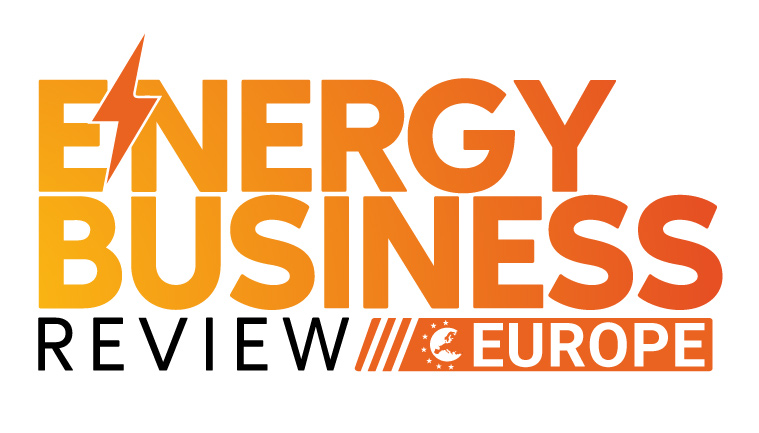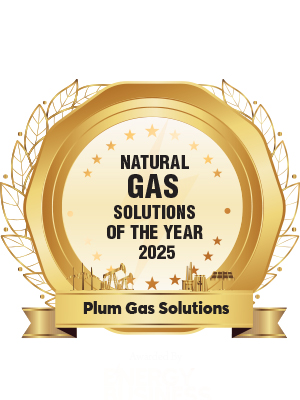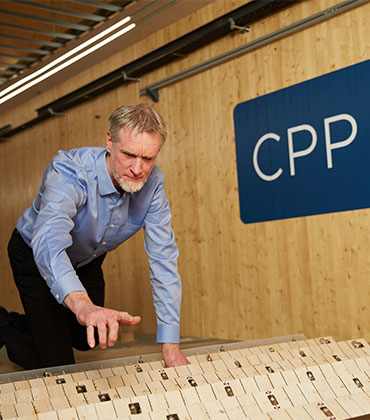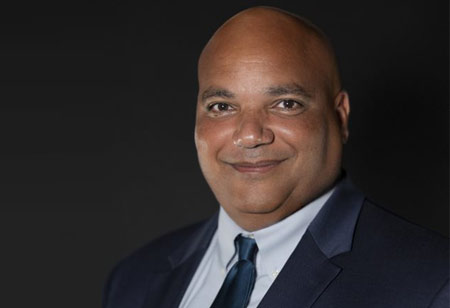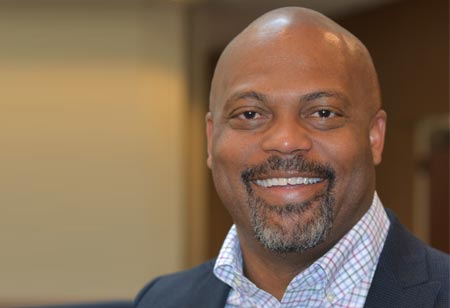Thank you for Subscribing to Energy Business Review Weekly Brief
Natural gas is emerging as the most pragmatic answer to surging energy demands of AI and cryptocurrency. Abundant, flexible, cost-efficient, and environmentally preferable than other fuels, it offers the reliability and scalability required by digital infrastructure today. The real challenge, however, is not in recognizing natural gas as the solution. It is in delivering it through systems engineered for mission-critical environments, like data centers, financial platforms, and advanced computing hubs that operate on a zero-downtime mandate. They cannot afford energy strategies that fail to scale, compromise resilience, or fall short of sustainability targets. Designing natural gas solutions that integrate efficiency, resilience, and environmental performance is the next frontier. That’s Plum Gas Solutions’ playing field, where the operating standard is ‘non-negotiable reliability.’ Plum designs, engineers, manufactures, and deploys proprietary natural gas systems, specializing in customized Pressure Regulation Systems (PRS) for last-mile delivery to power data centers and industrial operations. These trailer-mounted systems operate safely, efficiently, and without external power, with SCADA-based remote monitoring. Plum also enables flexible natural gas supply through virtual pipeline deployments, CNG and RNG tube-trailer delivery, fuel gas cleanup, custom manifolds, logistics, and full EPC and project-management services. These solutions support applications ranging from e-fracs and remote power to industrial fuel switching and renewable natural gas distribution. “Our mobile natural gas systems are deployed at hyperscale sites, in support of AI data center turbine fleets, deliver high-volume, precision regulated gas flow,” says Kehau Kincaid, chief operating officer. “With cloud-based monitoring and rapid startup capabilities, they maximize uptime and reduce operational risk.” Engineered for Flexibility, Proven for Reliability Plum’s equipment packages, produced in Alberta, Canada, are designed with the operator in mind—simple, durable, and dependable. Its flagship product, PRS, is designed to precisely control the pressure and temperature of gas streams. These systems take gas delivered at high pressure, step it down, add controlled heating, and ensure it reaches power generation equipment at the exact specifications needed for smooth, efficient operation. Available in a broad spectrum of sizes, pressure regulation units are capable of handling flow rates from as low as 500 thousand standard cubic feet per day (SCFD) up to 6.5 million SCFD.
Wind Engineering Services of the Year 2025
When the first solar farms began dotting the landscape, wind was often an afterthought. But CPP saw something others didn’t: the invisible wind forces shaping the future of renewable energy. Today, as the contribution of solar power to global energy demand rapidly grows, tracker systems become more complex, and climate patterns shift, the stakes have never been higher. That’s why CPP is constantly expanding its capabilities and service offerings for the solar energy industry. The team is pushing boundaries by investing in research, refining engineering test and analysis techniques, and asking hard questions about how these emerging technologies interact with wind. CPP Wind Engineering Consultants was an early pioneer in the emerging field of solar wind engineering, beginning in 2007, when the solar industry was still learning to adapt designs to the realities of wind. This early start enabled CPP to tackle challenges developers had not yet anticipated, from taming otherwise unstable behavior of long flexible tracker systems in gusty environments to optimizing fixed-tilt systems for minimal wind load. Today, CPP’s 15+ years of specialized research and hands-on project experience help clients design solar arrays that are both resilient and cost-effective, cementing its reputation as a leader in the field. Its work ensures projects meet technical and financial performance expectations while minimizing the longer-term risks of damage, downtime, and costly retrofits. The company’s capabilities extend beyond direct solar equipment testing within the laboratory to other solar plant design optimizations, such as full climate analysis studies, snow loading, sand drifting, topographic wind studies, and even full-scale field monitoring of wind loads and effects on PV systems. These projects all require the same disciplined approach: detailed wind analysis that considers the specific environment and conditions of each site. Rather than offering generic testing, CPP acts as a true partner, integrating its recommendations into a client’s broader engineering and business objectives. “When people come to us, it’s because their project’s success hinges on ensuring wind stability and cost effectiveness. That responsibility is something we take seriously every single day,” says Oliver Napp, CEO.
Top Renewable Energy Marketing Firm 2025
This public relations and public affairs firm was built for one reason: to get renewable energy projects approved and built. KAOH Media helps developers cut through opposition, win trust, and secure the political and community support that keeps projects on schedule and on budget. Leveraging KAOH’s vast experience in this market, resistance becomes momentum and delays turn into approvals—so that developers can focus on building infrastructure, not battling headlines or hearings. Clean energy projects are capital-intensive, highly scrutinized, and vulnerable to misinformation. In rural and politically sensitive regions, false narratives can spread faster than facts, stalling projects, raising costs, and eroding investor confidence. Developers know that no matter how strong the technical or financial case may be, a project cannot advance without community and political support. That’s where KAOH steps in. Through hyperlocal outreach, disciplined messaging, and trusted relationships, KAOH builds the political cover and grassroots backing that renewable projects need to withstand scrutiny and secure long-term acceptance. “Public affairs often rely on speed and spectacle. We focus on resonance— how the message connects with the audience,” explains Allan Hug, Co-Founder and CGO. A Four-Phase Approach to De-Risking Development KAOH aligns its strategy with the natural life cycle of renewable energy projects: 1.Pre-Application – Early engagement with landowners, coalition-building, and narrative development rooted in local values. By shaping the story from the start, KAOH reduces uncertainty and paves the way for smoother applications. 2.Approval Stage – Targeted outreach to zoning and planning boards, reinforced by grassroots organizing, media relations, and digital advocacy. KAOH equips decision-makers with the trust and cover they need to say yes. 3. Construction – Clear, consistent updates and rapid responses that demonstrate accountability: “milestones met, promises kept.” This minimizes friction and prevents small issues from spiraling into costly delays.
CXO INSIGHTS

Unlocking A Clean Energy Future
Bill Quinlan, President of Transmission and Offshore Wind Projects, Eversource Energy
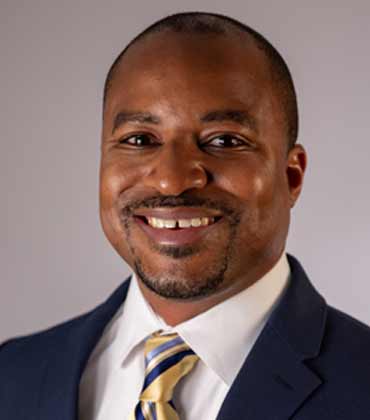
Emerging Energy Industry: Perks and Pitfalls
Donell Banks, Senior Advisor, Southern Nuclear

Navigating the Tides of Change in the Natural Gas Industry
Mark Reese, Vice President, U.S. Natural Gas Supply, Just Energy
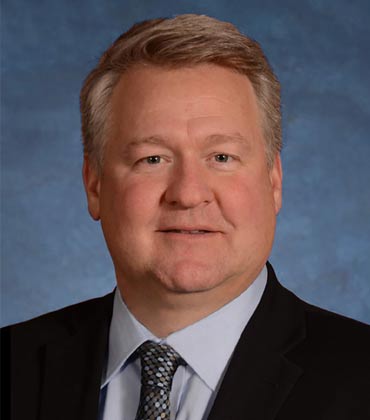
The Evolution and Integration of Renewable Energy
Jim Helvig, P.E., Vice President of Operations, Dashiell Corporation

Championing Strategic Leadership in Water and Forest Sustainability
Elvy Barton, Water and Forest Sustainability Senior Manager, Salt River Project
IN FOCUS
Mapping the Future of Natural Gas in Developing Nations
Natural gas plays a vital role in the energy transition in developing economies, providing cleaner energy, driving economic growth, and improving living standards through infrastructure development and market reforms.
Wind Energy's Next Frontier: Offshore Expansion and Engineering Innovation
Offshore wind is emerging as a vital clean energy source, driven by advancements in turbine size, foundation engineering, and digital technology, promising reliable and scalable power for the future.
EDITORIAL
Engineering the Future of Energy Excellence
The global energy landscape is advancing at an extraordinary pace, driven by the growing demand for cleaner, smarter and more resilient power systems. As the world transitions toward decarbonization, innovations across wind engineering, renewable energy marketing and natural gas technologies are enabling industries to meet sustainability goals while maintaining operational efficiency and reliability. Wind engineering services are redefining renewable infrastructure through precision design and performance optimization. From aerodynamic analysis and structural integrity testing to predictive maintenance and turbine siting, these services ensure wind power systems operate at peak efficiency. Renewable energy marketing firms are playing a pivotal role in accelerating the clean energy transition. By combining market intelligence and digital storytelling, these firms are connecting technology innovators with investors, policymakers and communities, driving the adoption of sustainable technologies at scale. Natural gas solutions continue to serve as a critical bridge in the transition toward a low-carbon future. Advanced gas turbine systems, carbon capture integration and hybrid energy configurations are enabling cleaner combustion and greater efficiency. These innovations are helping support grid stability while reducing emissions. This edition of Energy Business Review explores how the intersection of wind engineering precision, renewable energy advocacy and natural gas innovation is advancing energy resilience and environmental responsibility. Featured thought leaders, including Jonathan Berry, utility scale development manager at RWE and Ken Jones, Senior Director of Business Services at EPB, share insights on current industry practices and the strategies shaping the future of energy generation and distribution. We hope this edition inspires forward-thinking perspectives on how integrated energy solutions are empowering industries to stay sustainable, efficient and future-ready.
